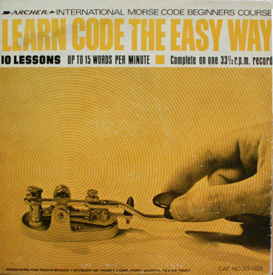dots, dashes, hyphens, &c.
- –
WHAT: - –
WHEN: Pre-1900
WHO: The Un-Gyve Limited Group
WHERE: Boston
DOTS AND DASHES: Morse Code is an alphabet or code in which letters are represented by combinations of long and short signals of light or sound; a method of transmitting text information via standardized sequences of short and long signals, referred to respectively as dots and dashes. Samuel F. B. Morse developed the concept of a single-wire telegraph, with the help of Leonard Gale and Alfred Vail with the introduction of relay circuits for long distance transmissions. This system sent pulses of electric current along wires which controlled an electromagnet that was located at the receiving end of the telegraph system. A system of code was implemented to transmit natural language using only these pulses, and the silence between them; the forerunner to modern International Morse Code. In time the Morse Code would become the primary language of telegraphy in the world, and is still the standard for rhythmic transmission of data. Radio telegraphy using Morse Code was vital during World War II, especially in transmitting messages between the warships and the naval bases of the Royal Navy, the Kriegsmarine, the Imperial Japanese Navy, the Royal Canadian Navy, the Royal Australian Navy, the U.S. Navy, and the U.S. Coast Guard. Long-range ship-to-ship communications was by radio telegraphy, using encrypted messages, because the voice radio systems on ships then were quite limited in both their range, and their security. Radiotelegraphy was also extensively used by warplanes, especially by long-range patrol planes that were sent out by these navies to scout for enemy warships, cargo ships, and troop ships.
N.B. The alphabet swatch colour is Gold-Dust from the Un-Gyve Palette.


